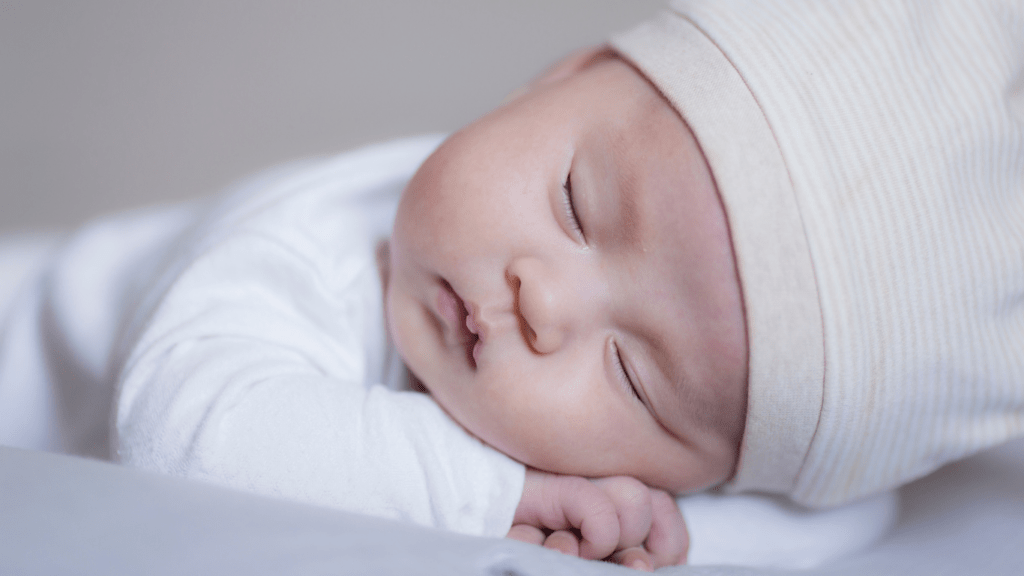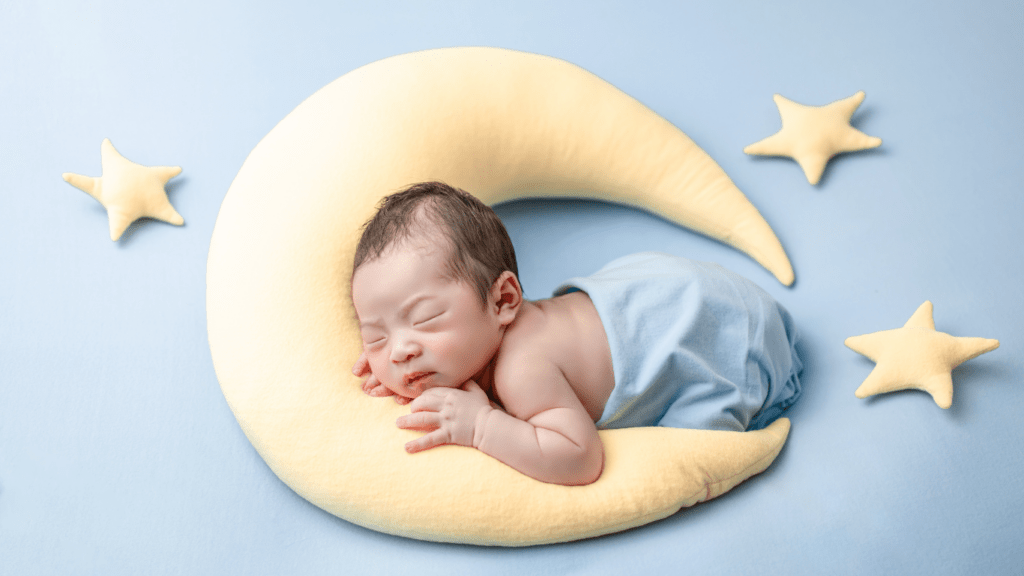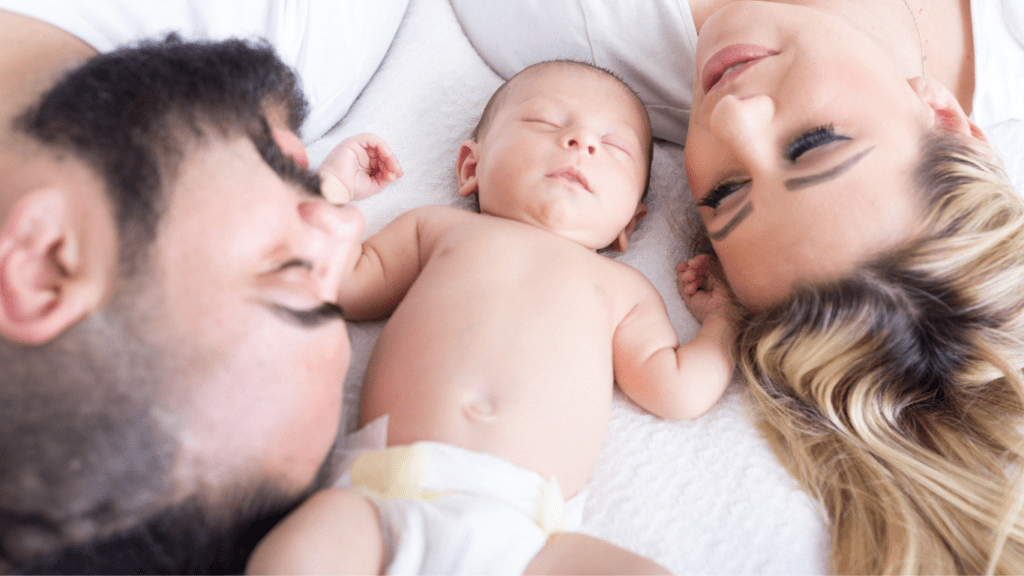Importance Of Safe Sleep Practices
Understanding safe sleep practices is crucial for all parents. These practices reduce the risk of Sudden Infant Death Syndrome (SIDS), which claims lives of approximately 1,500 infants each year in the US alone, according to the CDC. Creating a safe sleep environment involves more than just placing the baby in a crib; it includes careful consideration of sleep positioning, bedding, and room temperature.
Several key components ensure a safe sleep environment:
- Back Sleeping: Infants should sleep on their backs to minimize the risk of SIDS. This sleep position keeps their airway clear and supports healthier breathing.
- Firm Mattress: Using a firm mattress with a fitted sheet prevents suffocation hazards and ensures proper spinal alignment.
- Room Sharing: Sharing the room with the baby but not the bed reduces SIDS risk by up to 50%, as per the American Academy of Pediatrics.
Safe sleep practices extend beyond initial sleep setup:
- Swaddling: Swaddling can comfort newborns but must be done correctly to avoid hip dysplasia and overheating.
- Avoid Overheating: Keeping the room at a comfortable temperature, ideally between 68-72°F, helps reduce the risk of SIDS.
- No Loose Bedding or Toys: Items like blankets, pillows, and stuffed toys pose suffocation hazards and should stay out of the crib.
Educating caregivers, friends, and family members about these practices is essential. Consistency in implementing safe sleep guidelines creates a safer environment for infants, minimizing risks linked to sleep-related incidents.
Creating A Safe Sleep Environment
Ensuring a safe sleep environment is crucial for a newborn’s well-being. Here are several factors to keep in mind.
Choosing The Right Crib
Choosing the right crib impacts newborn safety significantly. The crib should meet safety standards set by the Consumer Product Safety Commission (CPSC). Cribs with adjustable mattress heights, sturdy slats, and without drop-side rails are ideal. The gap between the slats should be no more than 2.375 inches to prevent the baby’s head from getting trapped. Convertible cribs can be useful, transitioning from a crib to a toddler bed as the child grows.
Safe Sleep Surfaces
Select a firm, flat mattress designed for infant cribs. Soft mattresses can increase the risk of SIDS and suffocation. Ensure the mattress fits snugly, with no more than two fingers’ width between the mattress and crib sides. Products like sleep positioners and wedges are unnecessary and potentially dangerous. Use a fitted sheet specifically designed for the crib mattress.
Bedding Guidelines
Bedding in the crib should be minimal. Avoid using blankets, pillows, bumper pads, or stuffed animals. A fitted crib sheet is sufficient. If additional warmth is needed, use a wearable blanket or sleep sack rather than loose blankets. Keep the crib free of any items that could obstruct the baby’s breathing or increase the risk of suffocation.
Recommended Sleep Positions For Newborns

Selecting the right sleep position for newborns is crucial for their safety. Here’s what every parent needs to know about the recommended sleep positions.
Back Sleeping Benefits
Placing a newborn on their back to sleep significantly reduces the risk of Sudden Infant Death Syndrome (SIDS). According to the American Academy of Pediatrics (AAP), infants sleeping on their backs have a lower likelihood of airway obstruction since their trachea remains above the esophagus. This position also helps maintain a clear airway even if the baby spits up.
Positions To Avoid
Certain sleep positions can increase the risks associated with SIDS. Avoid placing newborns on their stomachs or sides. These positions are linked to higher chances of suffocation and rebreathing of carbon dioxide. Side sleeping can also be unstable, with the baby potentially rolling onto their stomach during sleep. Always ensure newborns sleep on their backs for optimal safety.
Reducing Sleep-Related Risks
Understanding safe sleep practices helps prevent sleep-related incidents and promotes a healthy sleeping environment for newborns.
Avoiding Overheating
Regulating a newborn’s body temperature can prevent overheating. Overheating increases the risk of Sudden Infant Death Syndrome (SIDS). Keep the baby’s sleep area at a comfortable temperature, around 68-72°F (20-22°C). Dress the baby in appropriate sleep clothing, like a one-piece sleeper, and avoid heavy blankets or overdressing. Check your baby’s chest or back to gauge their temperature instead of using hands or feet, which might feel cooler.
Preventing Suffocation Hazards
Preventing suffocation hazards in a crib ensures a safer sleep environment. Avoid placing soft items like pillows, stuffed animals, or crib bumpers inside the crib. Instead, use fitted sheets specifically designed for a tight fit around the mattress. Wearable blankets or sleep sacks are recommended to keep the baby warm while minimizing risks of loose bedding. Also, maintain a clutter-free crib, which helps prevent accidental suffocation and creates a safe space for the baby to sleep.
Understanding Sudden Infant Death Syndrome (SIDS)
Sudden Infant Death Syndrome (SIDS) is the unexpected and unexplained death of an otherwise healthy infant, typically during sleep. Understanding the risk factors and preventive measures is crucial for every parent.
Risk Factors
Several factors increase the risk of SIDS:
- Sleep Position: Placing babies on their stomachs or sides to sleep increases the risk of SIDS compared to back sleeping.
- Sleep Environment: Using soft bedding or allowing toys and crib bumpers increases the possibility of suffocation.
- Overheating: Dressing the baby in heavy clothing or keeping the room too warm can lead to overheating.
- Premature Birth: Infants born prematurely or with low birth weight are at higher risk due to underdeveloped respiratory systems.
- Parental Factors: Smoking during pregnancy, the baby being exposed to smoke after birth, and maternal age less than 20 years are notable risk factors.
Preventive Measures
Implementing these strategies can reduce SIDS risk:
- Back Sleeping: Always place the baby on their back to sleep, ensuring they maintain a clear airway.
- Firm Mattress: Use a firm crib mattress that fits snugly, and cover it with a fitted sheet without additional padding or positioners.
- Room Sharing: Share a room with the baby for the first six months, but ensure they sleep in their crib or bassinet.
- Avoid Overheating: Maintain room temperature between 68-72°F (20-22°C) and dress the baby in light sleep clothing.
- Smoke-Free Environment: Keep the baby away from smoke exposure both during pregnancy and after birth.
By understanding these aspects, parents can create a safer sleep environment and significantly lower SIDS risks.
Room Sharing Vs. Bed Sharing
Room sharing and bed sharing are two different practices that parents often consider. Room sharing involves placing the baby’s crib or bassinet in the same room where parents sleep. This practice can reduce the risk of SIDS by up to 50%, according to the American Academy of Pediatrics (AAP). Moreover, it allows for easier monitoring of the baby and more convenient nighttime feedings.
In contrast, bed sharing involves parents and their baby sleeping in the same bed. The AAP advises against bed sharing due to increased risks of accidental suffocation, strangulation, and sudden infant death. Soft bedding, pillows, and adult bodies in the bed can pose significant hazards to an infant’s safety.
Although room sharing is encouraged, it’s important to follow specific guidelines to maximize safety. Always place the baby on their back on a firm, flat surface designed for infant sleep, such as a crib or bassinet. Use a fitted sheet without any additional bedding, pillows, or toys in the sleep space. Maintain the room temperature around 68-72°F (20-22°C), and ensure caregivers are educated on safe sleep practices.
When comparing room sharing and bed sharing, the key difference lies in safety. Room sharing provides the benefits of proximity without the elevated risks associated with bed sharing. Prioritizing the baby’s safety by choosing room sharing can offer peace of mind and a more secure sleep environment.
Safe Sleep Tips For Parents
Ensuring newborns sleep safely involves following specific guidelines. These tips help minimize the risks of Sudden Infant Death Syndrome (SIDS) and other sleep-related issues.
Place Baby On Their Back
Always place your newborn on their back for every sleep, including naps. The American Academy of Pediatrics (AAP) found that back sleeping significantly reduces SIDS risk. This position maintains a clear airway and prevents suffocation.
Use A Firm, Flat Mattress
Ensure the mattress is firm and flat, fitting snugly in the crib. Avoid soft mattresses, pillows, or sleep positioners, as they can increase suffocation risks. Crib standards set by the Consumer Product Safety Commission (CPSC) help ensure safety compliance.
Room Sharing
Room sharing without bed sharing is recommended. Placing the baby’s crib or bassinet in the same room as yours can reduce SIDS risk by up to 50%, according to the AAP. Use a crib with a firm mattress and fitted sheet.
Maintain Comfortable Room Temperature
Keep the room temperature between 68-72°F (20-22°C). Dress the baby in appropriate sleep clothing to avoid overheating, a known SIDS risk factor. Avoid heavy blankets or over-bundling the baby.
Keep Crib Free Of Hazards
Crib safety involves keeping it free of soft items like pillows, stuffed animals, or loose bedding. These items pose suffocation and strangulation risks. Use a fitted sheet, wearable blankets, or sleep sacks for warmth.
Ensure Proper Swaddling
If swaddling the baby, ensure it’s done correctly to avoid hip dysplasia. The hips should move freely, and the swaddle should not be too tight. Transition to a wearable blanket when the baby can roll over.
Educate Other Caregivers
Ensure anyone caring for your baby, including family members and daycare providers, understands safe sleep practices. Consistent follow-through on these guidelines is crucial for reducing risks.
Smoke-Free Environment
Maintain a smoke-free environment around your baby. Exposure to smoke increases SIDS risk. This includes secondhand and thirdhand smoke.
Use Pacifiers
Offer a pacifier at nap time and bedtime. Studies suggest pacifiers might reduce the risk of SIDS. If the baby doesn’t like the pacifier or it falls out during sleep, there’s no need to reinsert it.
Follow AAP Guidelines
Adhering to AAP guidelines regarding safe sleep practices provides a solid foundation for minimizing risks. These guidelines evolve based on the latest research, so staying updated is beneficial.
By following these tips, you can create a safer sleep environment for your newborn and ensure peace of mind.


 Editheena Kees – Health and Wellness Specialist Editheena Kees is a dedicated Health and Wellness Specialist at Makes Parenting Watch, where she combines her expertise in pediatric health, nutrition, and mental wellness to offer parents comprehensive support for raising healthy children. With a background in public health and family nutrition counseling, Editheena understands the importance of a balanced approach to both physical and mental well-being. She writes extensively on topics such as healthy eating habits for children, strategies for managing parental stress, and the importance of self-care for new parents. Editheena also emphasizes the significance of fostering healthy emotional development in children, offering tips on building resilience and maintaining strong family connections. Her holistic approach ensures that families are equipped not just to survive the challenges of parenting, but to thrive. In addition to her writing, Editheena collaborates with healthcare professionals to provide readers with the latest research and recommendations in child health.
Editheena Kees – Health and Wellness Specialist Editheena Kees is a dedicated Health and Wellness Specialist at Makes Parenting Watch, where she combines her expertise in pediatric health, nutrition, and mental wellness to offer parents comprehensive support for raising healthy children. With a background in public health and family nutrition counseling, Editheena understands the importance of a balanced approach to both physical and mental well-being. She writes extensively on topics such as healthy eating habits for children, strategies for managing parental stress, and the importance of self-care for new parents. Editheena also emphasizes the significance of fostering healthy emotional development in children, offering tips on building resilience and maintaining strong family connections. Her holistic approach ensures that families are equipped not just to survive the challenges of parenting, but to thrive. In addition to her writing, Editheena collaborates with healthcare professionals to provide readers with the latest research and recommendations in child health.
